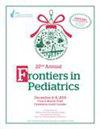Lateral column lengthening versus subtalar arthroereisis for pes planovalgus in patients with cerebral palsy: a systematic review and meta-analysis
IF 2.1
3区 医学
Q2 PEDIATRICS
引用次数: 0
Abstract
IntroductionAlthough pes planus, a common deformity in children with cerebral palsy (CP), is predominantly treated through lateral column lengthening (LCL), subtalar arthroereisis (SA) has also gained popularity for this purpose. This systematic review was conducted to compare surgical outcomes between LCL and SA for pes planovalgus in children with CP.MethodsPubMed, EMBASE, Cochrane Library, and Google Scholar were comprehensively searched for relevant articles reporting the outcomes of LCL and SA in the target population. Surgical outcomes were evaluated in terms of radiographic parameters and postoperative complications.ResultsThis review included 22 studies involving patients undergoing LCL (LCL group) and 9 studies involving those undergoing SA (SA group). LCL outperformed SA in terms of corrections in the talonavicular coverage angle (8.1°–42.1° vs. 8.0°–30.7°), anteroposterior talo–first metatarsal angle (12.3°–33.7° vs. 9.8°–21.4°), and calcaneal pitch angle (2.5°–29.7° vs. 3.5°–8.0°). Furthermore, the risk of postoperative complications, such as recurrence, pain, undercorrection, and overcorrection, was higher in the LCL group than in the SA group. However, the risks of reoperation and implant-related problems were higher in the SA group than in the LCL group. A meta-analysis of two randomized studies revealed that improvement in calcaneal pitch angle was significantly greater in the LCL group than in the SA group (mean difference: 2.09°;侧柱延长术与足底关节置换术治疗脑瘫患者的趾外翻:系统综述与荟萃分析
简介:扁平足是脑性瘫痪(CP)儿童的一种常见畸形,主要通过外侧柱延长术(LCL)治疗,但足底关节置换术(SA)在这方面也越来越受欢迎。本系统性综述旨在比较 LCL 和 SA 治疗 CP 儿童趾外翻的手术疗效。方法在 PubMed、EMBASE、Cochrane Library 和 Google Scholar 上全面检索了报告 LCL 和 SA 在目标人群中疗效的相关文章。结果该综述包括22项涉及接受LCL治疗的患者(LCL组)和9项涉及接受SA治疗的患者(SA组)的研究。在距骨覆盖角(8.1°-42.1° vs. 8.0°-30.7°)、距骨-第一跖骨前后角(12.3°-33.7° vs. 9.8°-21.4°)和小关节间距角(2.5°-29.7° vs. 3.5°-8.0°)的矫正方面,LCL优于SA。此外,LCL组术后出现复发、疼痛、矫正不足和矫正过度等并发症的风险高于SA组。不过,SA 组再次手术和种植体相关问题的风险要高于 LCL 组。对两项随机研究进行的荟萃分析表明,LCL组患者小腿骨俯角的改善明显大于SA组(平均差异:2.09°;P = 0.0488)。然而,LCL术后并发症似乎比SA术后更常见。系统综述注册https://inplasy.com/inplasy-2024-5-0126,标识符202450126。
本文章由计算机程序翻译,如有差异,请以英文原文为准。
求助全文
约1分钟内获得全文
求助全文
来源期刊

Frontiers in Pediatrics
Medicine-Pediatrics, Perinatology and Child Health
CiteScore
3.60
自引率
7.70%
发文量
2132
审稿时长
14 weeks
期刊介绍:
Frontiers in Pediatrics (Impact Factor 2.33) publishes rigorously peer-reviewed research broadly across the field, from basic to clinical research that meets ongoing challenges in pediatric patient care and child health. Field Chief Editors Arjan Te Pas at Leiden University and Michael L. Moritz at the Children''s Hospital of Pittsburgh are supported by an outstanding Editorial Board of international experts. This multidisciplinary open-access journal is at the forefront of disseminating and communicating scientific knowledge and impactful discoveries to researchers, academics, clinicians and the public worldwide.
Frontiers in Pediatrics also features Research Topics, Frontiers special theme-focused issues managed by Guest Associate Editors, addressing important areas in pediatrics. In this fashion, Frontiers serves as an outlet to publish the broadest aspects of pediatrics in both basic and clinical research, including high-quality reviews, case reports, editorials and commentaries related to all aspects of pediatrics.
 求助内容:
求助内容: 应助结果提醒方式:
应助结果提醒方式:


